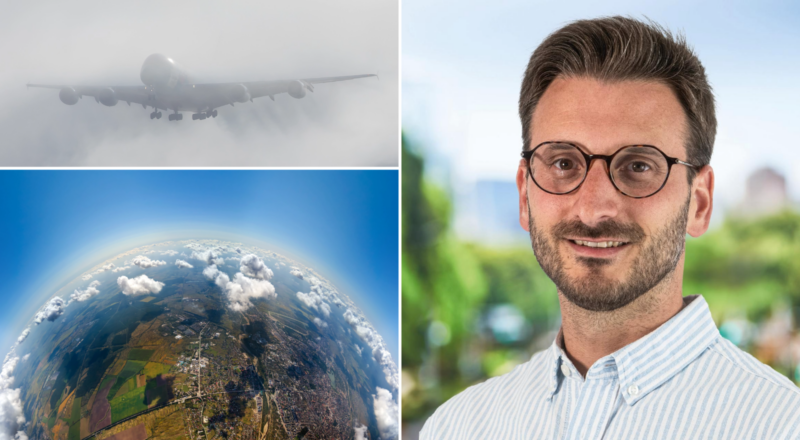Turbulence has dominated the headlines in recent months. Some flights have been severely affected. To better understand the phenomenon, Gate.31 met a climatologist and a pilot.
Here’s a two-part article looking at the phenomenon from the point of view of a meteorologist (part 1) and a pilot (part 2).
Take off for the upper troposphere!
Sébastien Doutreloup, climatologist at ULiège, tells us more…
At first sight, turbulence is a purely meteorological phenomenon. But when we talk about the severe turbulence that has affected the aviation sector in recent months, we are talking about turbulence linked to both weather and climate phenomena.
We’re talking about so-called clear-air turbulence (CAT), the turbulence that occurs outside disturbed areas when the sky is clear and cloudless. This is the most dangerous type of turbulence because it is invisible: the rise and fall of the air, which is not represented by water droplets, surprises the pilot because the aircraft suddenly loses altitude and then regains it. As the phenomenon cannot be predicted, it is difficult to warn the passengers on board the aircraft, with all the consequences that this entails…

Is there a link between climate change and the frequency and intensity of turbulence?
This type of turbulence (CAT) has always existed, but modelling shows that the probability of this type of turbulence occurring has increased since the 1970s (see graph).

Source: https://agupubs.onlinelibrary.wiley.com/doi/full/10.1029/2023GL103814
As global warming accelerates, we are witnessing an overheating of the atmosphere: bubbles of hot air are rising and creating more and more turbulence. However, one uncertainty remains: the atmosphere does not heat up in the same way at different altitudes. It seems (this remains a hypothesis) that the upper atmosphere heats up differently from the rest of the troposphere, which could have an increasing or decreasing effect on turbulence. Unfortunately, climate models are not yet able to correctly represent this warming of the upper atmosphere. And it remains a challenge for the community of climatologists to resolve this unknown.
Despite these doubts, given the current state of knowledge, yes, we are seeing an increase in this type of turbulence!
Which parts of the world and which (aircraft) routes are most affected?
Although certain parts of the world are more affected by turbulence in general (mountainous regions, equatorial regions, etc.), clear-air turbulence is much more difficult and less easy to locate. The map below shows a sharp increase over the North Atlantic. This may be due to more rapid warming in this region.
The upper troposphere, between 7,000 and 12,000 meters, is the most vulnerable area. This is where turbulence is most common in clear air, close to jet streams.

Source: https://agupubs.onlinelibrary.wiley.com/doi/full/10.1029/2023GL103814
Will this phenomenon continue to develop in the coming years and decades?
Thermodynamic turbulence, known as ‘hot air bubbles’, will increase with global warming for two reasons. First, global warming overheats the ground, so hot air bubbles will rise much higher than in the past. Second, warmer air condenses less, so fewer clouds form. All in all, global warming will lead to more rising air that is not marked by the presence of clouds. This explains some of the increase in clear sky turbulence.
Some studies now point to a further increase in clear-air turbulence, which is expected to double or even quadruple by 2050-2080. However, this increase depends on the region of the world (mainly mid-latitudes), the socio-economic scenario and the climate models used.
Aircraft image ©️Clément Alloing photography


